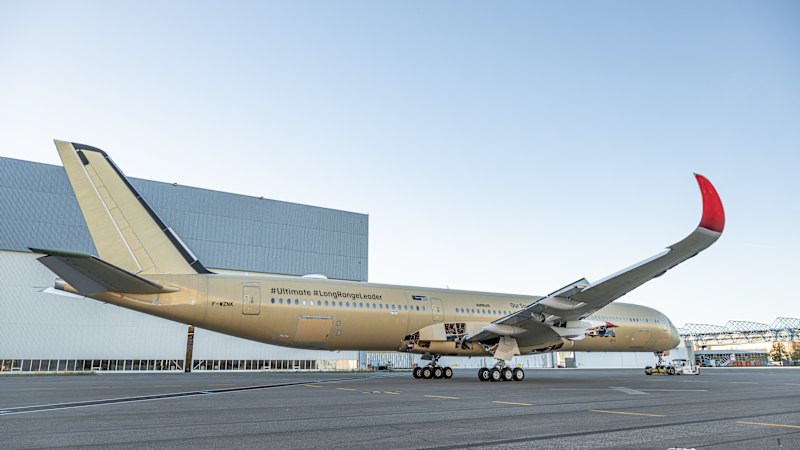
The plane that Qantas is relying on to launch the world’s longest non-stop flights from Sydney to London has moved closer to completion. This week, the first A350-1000 ULR, a key component of Qantas’ ambitious Project Sunrise, was transported from Airbus’ factory in Hamburg, Germany, to Toulouse, France, where it will undergo final assembly.
Qantas plans to begin these groundbreaking 22-hour direct flights from Sydney to London and New York in the first half of 2027. The airline’s annual general meeting is set for Friday, where further details are expected to be discussed. “These flights will cut up to four hours off the journey and transform how people experience ultra long-haul travel, through science-backed design to minimize jet lag and maximize wellbeing,” stated Qantas Group chief executive Vanessa Hudson.
Assembly and Testing in Toulouse
So far, the forward, center, and rear fuselage sections of the first aircraft have been assembled, along with the wings, tail section, and landing gear. In Toulouse, it will receive its engines and flight test instruments before a rigorous test flight program begins in 2026. This aircraft is the first of 12 A350-1000 ULRs scheduled for delivery late next year.
“Given Australia’s position in the world, Qantas has a long history of breaking aviation barriers,” Hudson remarked. “Project Sunrise will not only overcome the tyranny of distance, it will fundamentally change the way our customers travel the world.”
Historical Context and Innovation
Project Sunrise builds on Qantas’ historic expertise in long-haul travel. Its name is inspired by Qantas’ “Double Sunrise” flights during World War II, which maintained Australia’s connection to distant allies. These flights required 24 hours of flying, allowing pilots to witness two sunrises.
The A350s will be specially configured for ultra-long-haul flights, featuring a wellbeing zone with handles for passengers to stretch, guided on-screen exercise programs, a hydration station, and lighting effects designed to minimize sleep disruption. Additionally, Qantas has unveiled plans for a refurbished International Business Lounge in Sydney, featuring a 150-square-meter outdoor terrace to enhance pre-flight wellness for Project Sunrise passengers.
Economic Impact and Strategic Outlook
The Australia-UK and Australia-US routes, once operational, will become the longest commercial flights globally, surpassing Singapore Airlines’ current record. In August, analysts from investment bank Jarden projected that Project Sunrise could generate over $400 million annually on a pre-tax basis for Qantas.
According to Ten Cap portfolio manager Jun Bei Liu, Project Sunrise offers Qantas an opportunity to enhance its product offerings. “If you look at global airline offerings in the last five years, they have improved significantly. Qantas, to be quite frank, hasn’t really kept up to date with a lot of the capital expenditure,” said Liu. She noted that while Qantas, like other airlines, faced challenges during COVID, it is now time for the airline to revitalize its fleet. She expressed optimism about improved yields if Project Sunrise succeeds, though she acknowledged a small risk of failure.
Qantas’ Financial Performance and Brand Rebuilding
In the fiscal year ending June 30, 2025, Qantas’ net income surged by 28 percent to $1.61 billion, driven by robust travel demand, which is anticipated to persist. Underlying earnings reached $2.39 billion, with much of the growth attributed to the economy brand Jetstar, which saw a 55 percent increase in pre-tax earnings.
Hudson is focused on rebuilding trust in the Qantas brand, both internally and externally, following the challenges faced during the tenure of former CEO Alan Joyce, particularly during the chaotic COVID years. As Qantas prepares to embark on this new chapter, the airline aims to reaffirm its position as a leader in long-haul travel innovation.







